I had the chance to discover a very beautiful story to share with you. It's about some young enthusiasts who are building houses on wheels in Oradea. But the story is about more than just building wooden houses. It is about youth, enthusiasm, courage, principles, mentality, perseverance, soul, humanity. It is about people who are beautiful in face and soul, people who love wood and treat it with respect. But let me tell you the story.
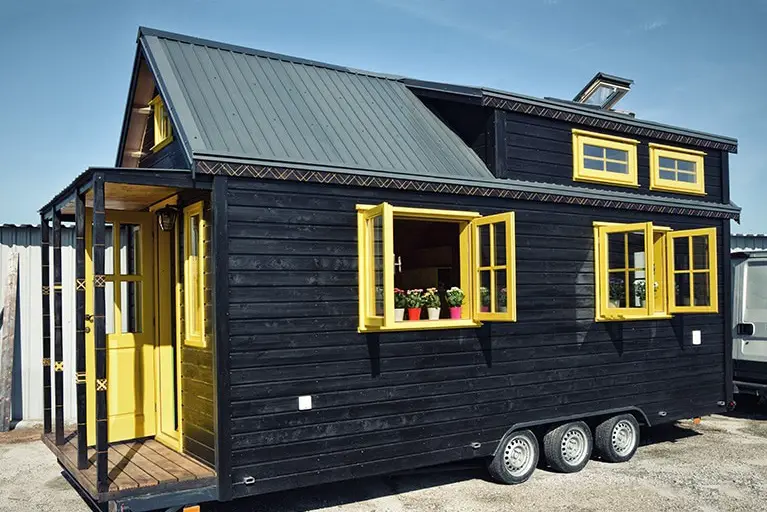
Student in Timisoara, going to Germany and living in a wagon on wheels.
Cătălin Șendresc is a 29-year-old young man from Oradea. He now makes houses on wheels. His story begins in his student days. "When I was a student in Timisoara in 2011 I set up a company to open a hostel. At that time there was a program for young entrepreneurs through which in the end I didn't get funding. The company was put into inactivity, I left the country. At some point I also ended up living in Munich with my girlfriend who was from there..”
When he got to Germany, where he met Christiane, he thought of settling there. "The rents being expensive in the city we chose to live on the outskirts of the city in a small forest with other people in this kind of mobile, worker's wagon type of house. That's where we first came into contact with living in small spaces, with the phenomenon of downgrading. It's interesting to live in a smaller space because you realise how many things you really need to live somewhere happily.”
Beginnings, the first cottage and the return home.
It was 2015, when the idea of living in a house on wheels was revived in Europe. Christiane, knowing him to be handy, suggested one day that he build such a house. "I was working in a hotel at the time, the wheelhouse movement had just started in Europe, and one day my girlfriend suggested I build one myself. That very evening there was a programme on TV talking about these cottages and I took it as a sign. I wasn't a carpenter but I had worked with wood many times before and was handy.”
Catalin bought tools and got to work. The idea was to build a house and see if people would be interested in buying it. "I bought cheap tools that are more of a hassle than a help and that's how I started. That was in the spring of 2015. I built a sample box to see if there would be people interested in such a thing and indeed there were. We also ran into people interested, we also ran into competition that would get in our way. Next, we moved to Oradea...”
When he arrived in Oradea, he reactivated the company he had set up years ago in Timisoara and changed its areas of activity. In order to stop working only on inspiration, he took a carpenter's course. He then looked into the legal requirements for building houses on wheels. It was a lot harder than the work itself, but slowly everything got on track, speaking of houses on wheels 🙂 He rented a shed, hired a friend and they started work.
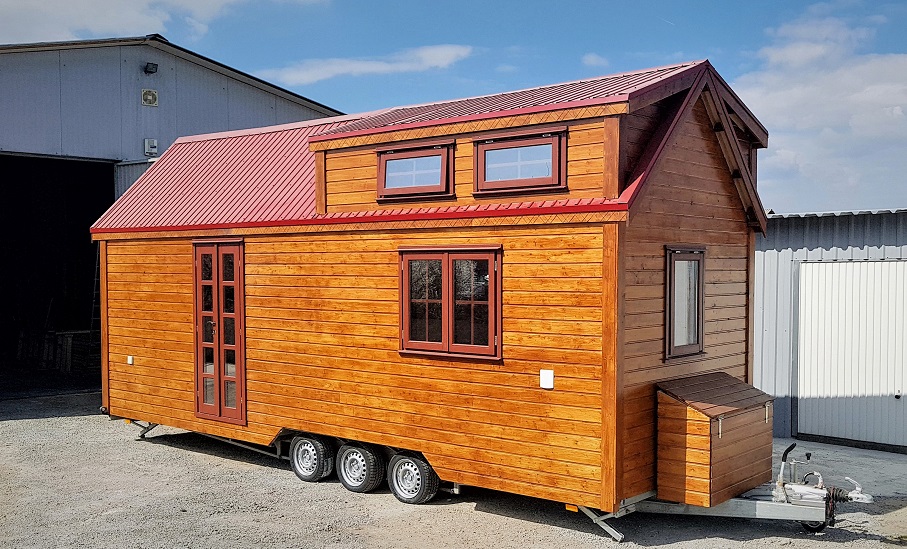
The team now and the homes they make.
The beginning of the project in Romania was not easy and if you thought that now it has a big factory with hundreds of employees, you are wrong. "At first, the organisational side was harder, we had to find out the legal constraints of building wheelhouses, which were not easy to find out at the time. Slowly everything fell into place. When I could afford it, I got a rented hall, an employee who is a friend of mine and now we are 4 people inn the permanent team, the two Romanian workers, the girlfriend who takes care of the German side and a friend from Portugal who takes care of the design and image side of the company."Sometimes more people are needed, but they do seasonal collaborations or outsource activities.
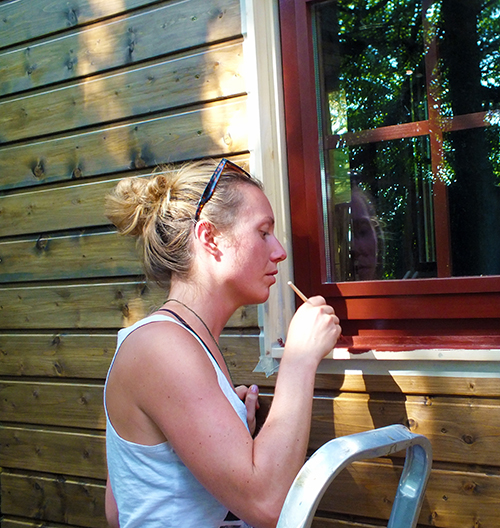
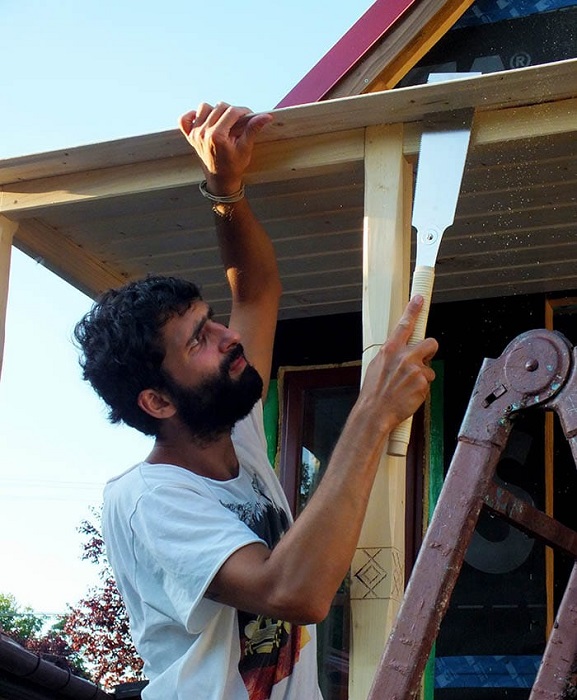
For construction I use softwood - resinous - because the trailers are for category B to be towed by a normal machine that can carry up to max.3.5 t. The houses are 2.54 m wide, 4 m high and between 4 and 7 m long, depending on the model and customer requirements. They also use oakbut only for parquet.
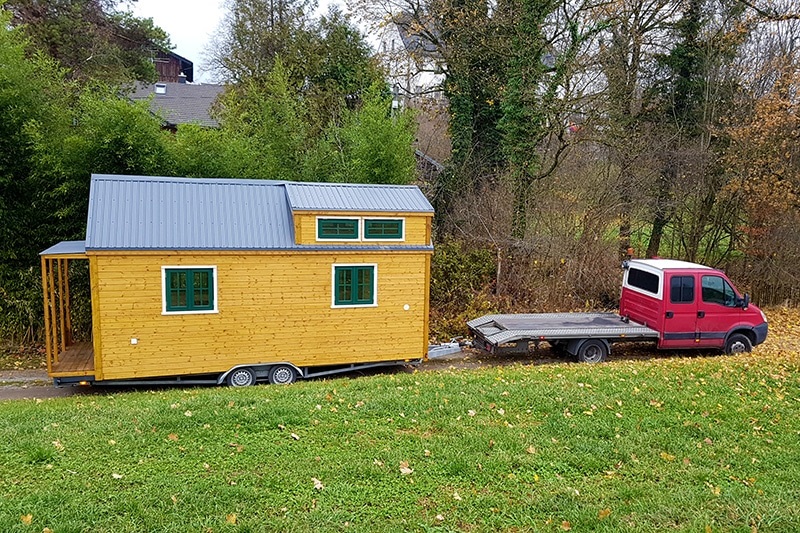
The house is basically an open space with only a separate bathroom. The entrance is into the living room, which is as wide as the width of the house. At one point the staircase leading to the "attic", where the bedroom is, narrows the space.
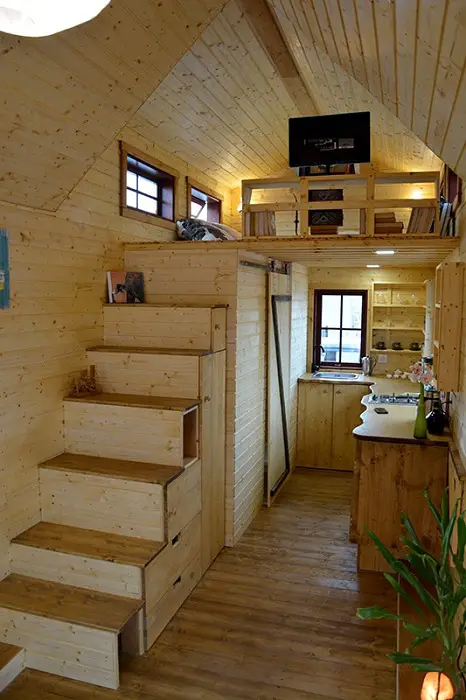
From here starts the kitchen, equipped with everything you need.
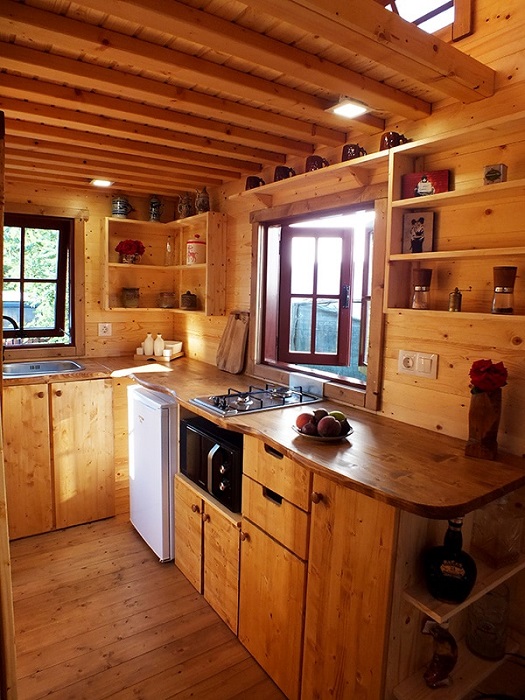
Down the stairs is the bathroom, with shower, sink and toilet, separated from the rest of the space by a sliding door.
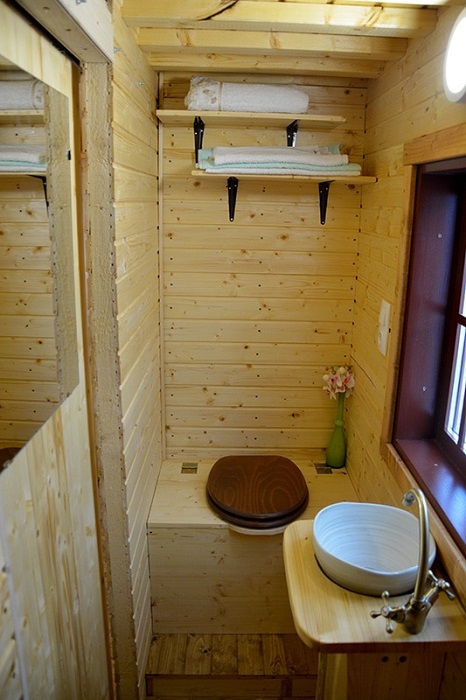
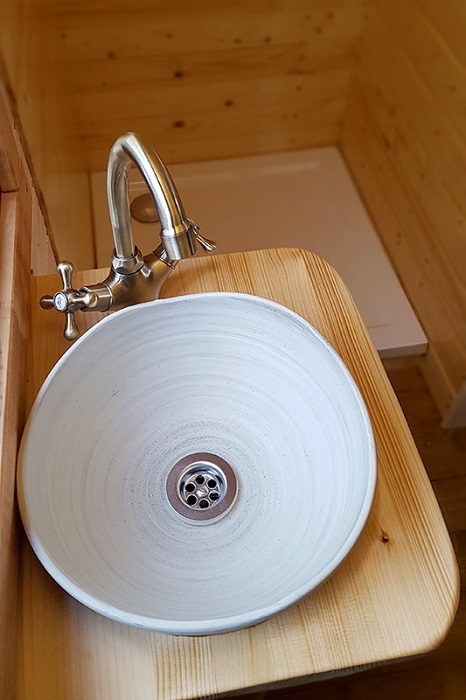
The staircase doubles as storage space, with drawers built in and a tall space to hang things (the wardrobe 🙂 ).
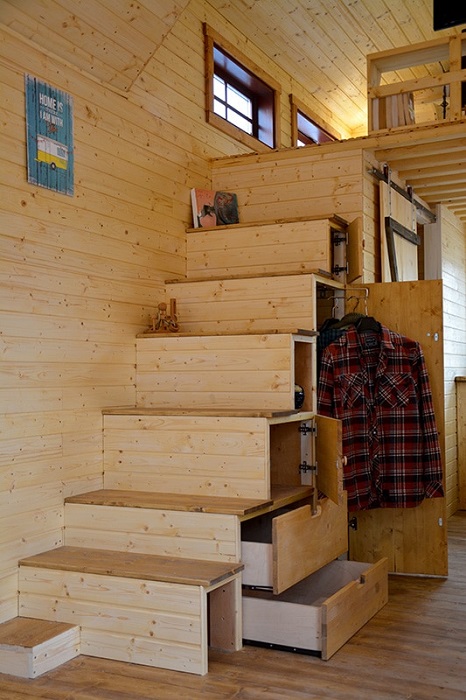
The loft bedroom is generous. From the bed you can watch the TV, which sits on a console that doubles as a mini-library.
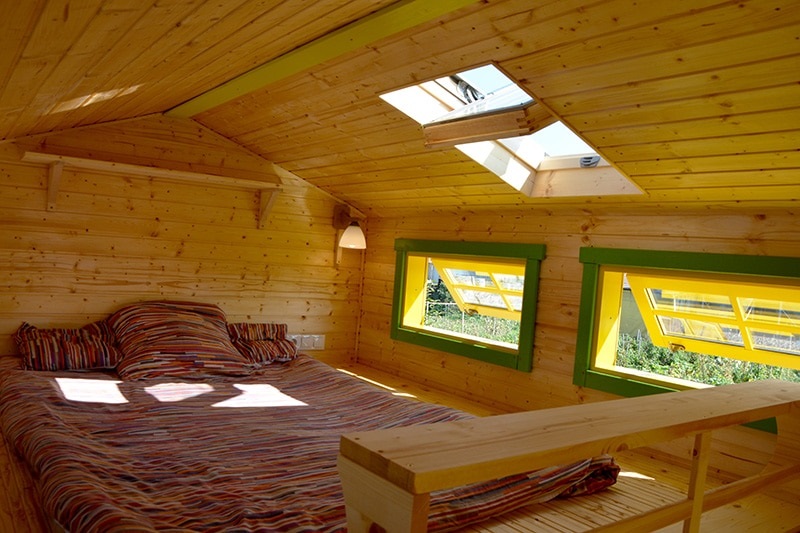
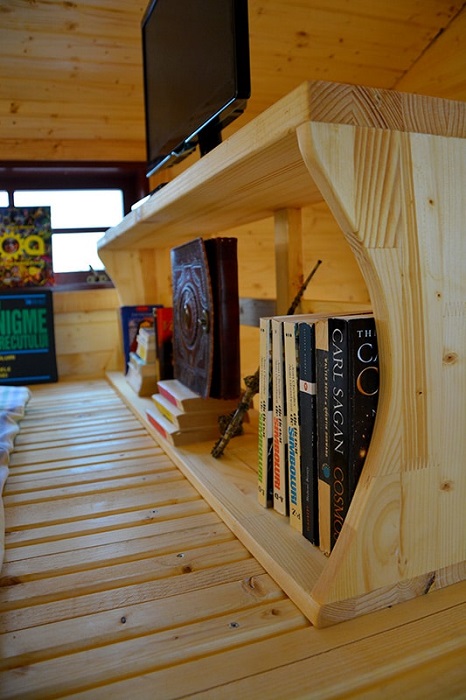
The house is fully functional, with cold water, hot water, electrical system, underfloor heating or with wood stove, double glazed windows.
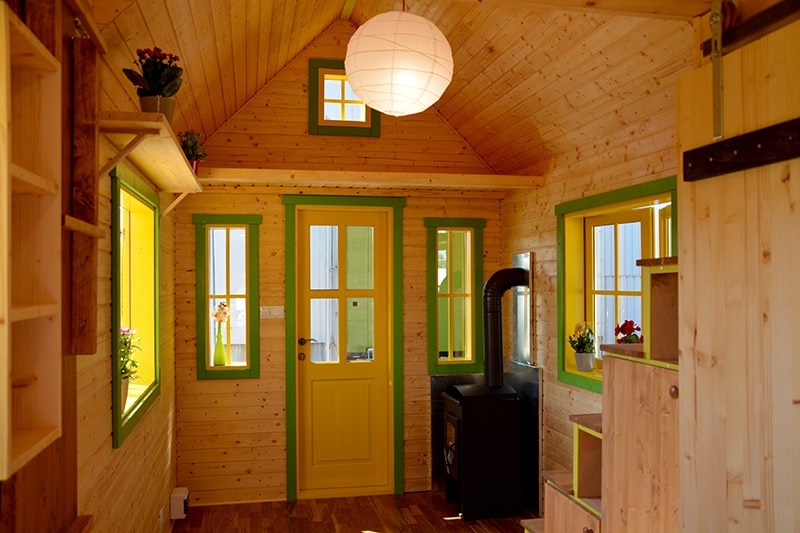
On request, the houses can be equipped with solar panels. Connection to water and electricity is the same as for caravans.
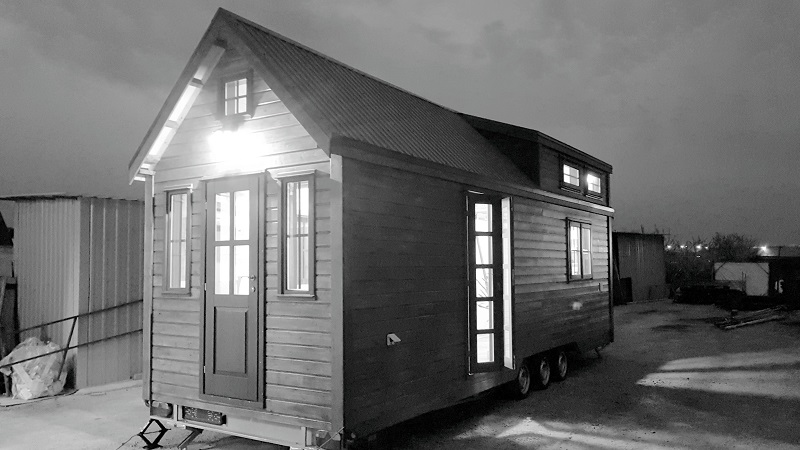
The working time for such a house, from the moment of agreement with the client (signing of the contract) to the handover, is 4 months. Can you believe it?
Finishing with natural and ecological products, wood from sustainable exploitation.
From the very beginning, they have focused on the quality of materials, on products that are as healthy as possible and with as little impact on the environment as possible. Despite the difficulties in finding the right materials and the low prices, they have never compromised and this has brought them success. "From the beginning we cared about the quality of the work and the mentality behind what we want to do. That is, we have not compromised on either the quality of the materials or the ethos behind the timber. We used eco-friendly, healthy ones that have a lower carbon footprint in the production process, even if they are more expensive."Customers saw the quality, appreciated the reliability and principles and paid the right price. For insulation of housesFor example, no polystyrene or basalt wool is used, but hemp, and the anti-condensation film is made of recycled paper.
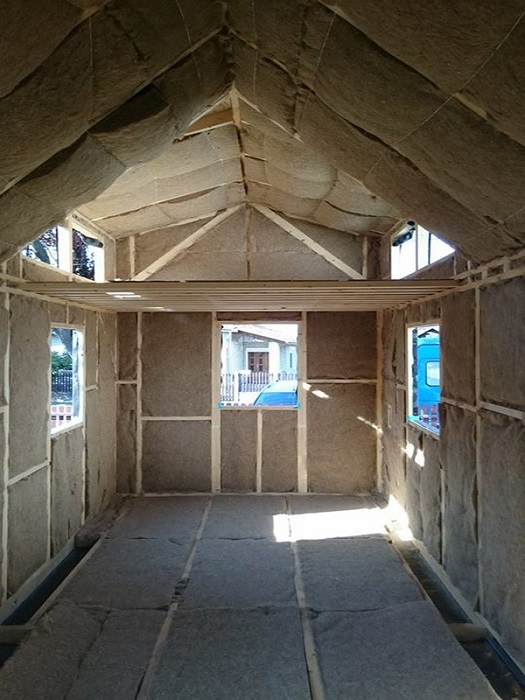
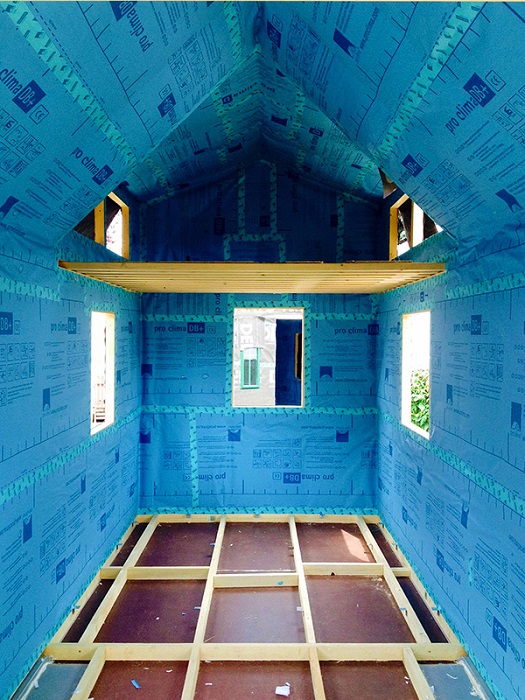
Wood finishing on the inside is done with oils ecological. They looked for a product they could trust even to treat kitchen worktops that you eat. They found them at Naturalpaint and that's also where they get the stain pigments, lacquers and eco-friendly paints with which they finish the wood on the outside. "The eco-friendly indoor wood oils we trust even to treat our kitchen countertops, the pigments we use and the eco-friendly outdoor wood polish we buy from Naturalpaint, a partner we rely on for product quality and professionalism. The wood paints are also water-based.”
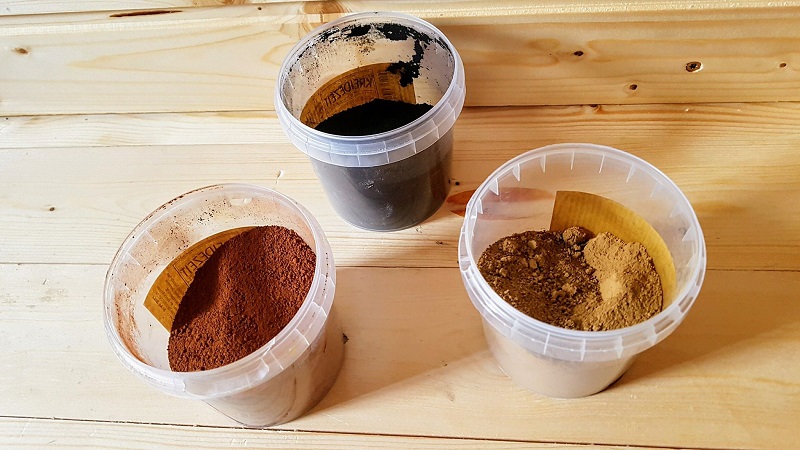
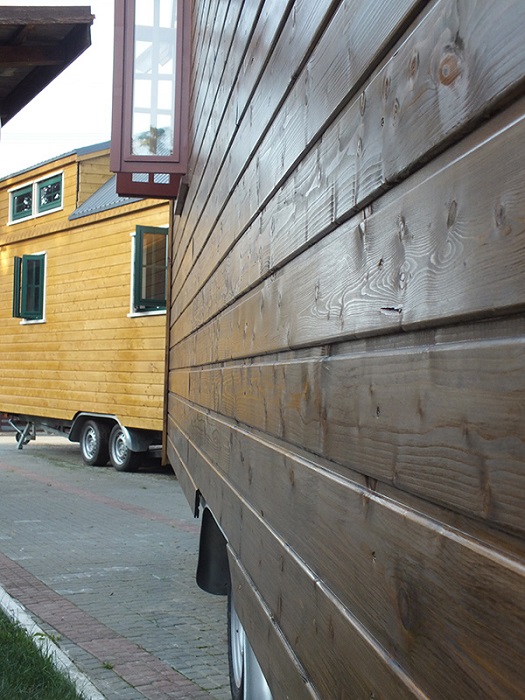
For one of the projects they used the wood burning technique, known as the Japanese technique, for outdoor protection. Shou Sugi Ban, but used in the past and in our country because it protects the wood very well, making it last even hundreds of years. They are already thinking of using it more in the future.
They bring 90% wood from Germany, from a gater that cuts the wood to the larger sizes needed to build the structure. Being constrained by weight, any joints removed are welcome. But there's another reason they bring the wood from Germany, even if it costs them more. They trust the wood to come from sustainable sources. Catalin and his friends are principled people who love the forest and respect it. "We are of the opinion that Romania is deficient in the replanting of legally felled forests, and there is no point in talking about illegally felled forests." Catalin told me sadly.
Working techniques, tools and sources of inspiration.
After the carpentry course he took and some work problems, he gave up buying cheap tools. He switched to high performance tools being convinced that he had neither the time nor the money to break wood and work for nothing, and a good tool does most of the work. I also use hand tools, especially when the power goes out, he says humorously. They have Japanese saws and chisels that they use to put their "signature" on the houses: stylized traditional Romanian motifs that they make on the patio posts or eaves.
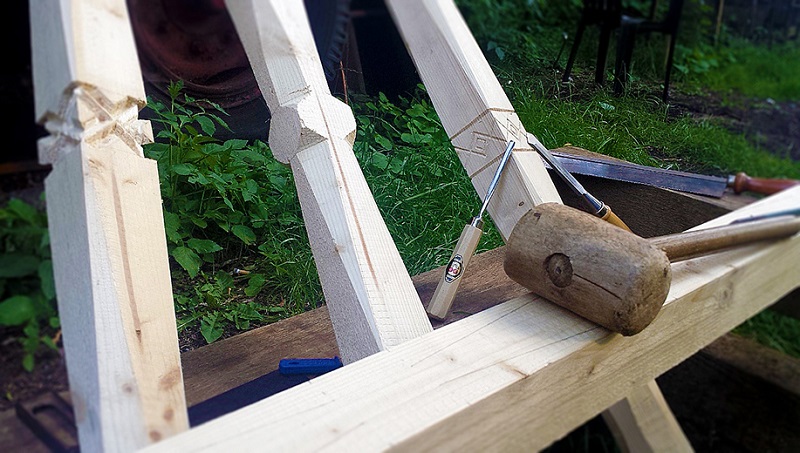
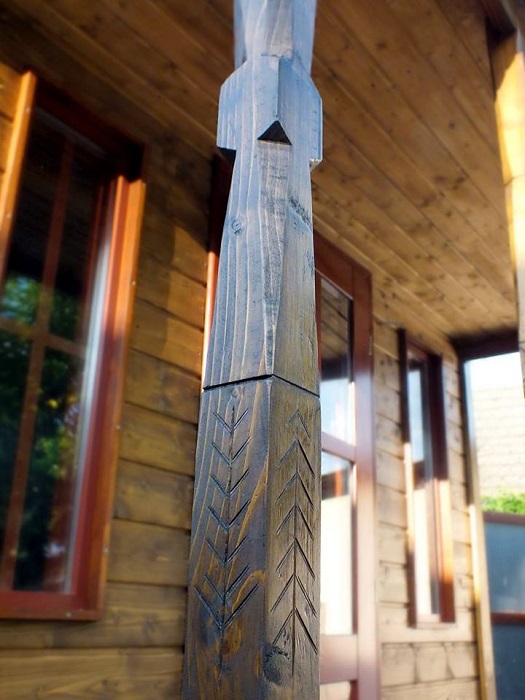
I was curious to find out where they get their inspiration from, how they arrived at house models which I still do. The answer convinced me that it's all about the will to do and determination. If you want to do something you will certainly find out how, especially now that information is more and more "out there" and circulating very fast. "The Internet was the primary source of inspiration in the beginning, and I recommend all enthusiastic carpenters to look up specialized terms in English and German. I'm not going to lie, we were inspired by what the Americans were building, but I bet no one will dispute that they were also inspired by Swedish house architecture."Gradually they came up with their own designs, inspired combinations of materials and design, innovative in this industry.
And a conclusion worthy of these beautiful people.
The way Cătălin Șendresc tells his story is touching and motivational in equal measure. If I didn't know I was from here I would have said it was an "imported" story from outside. And how many of these stories are hidden somewhere, in some corner of the country. And the ending had to live up to the story: for the future the team plans to build cottages, at the same level of quality, for people who, for various reasons, don't have a roof over their heads. They want to make cottages for social cases. "We want to succeed!", concludes Cătălin, and I believe him.
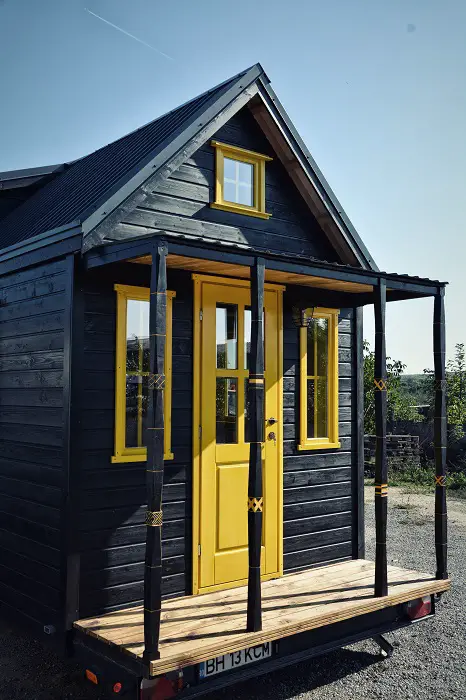
You can see videos, tutorials related to the construction of wheelhouses and more on their websitewww.tinywunderhouse.com.

















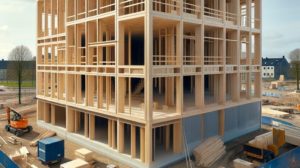

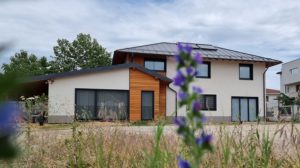
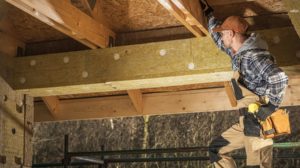

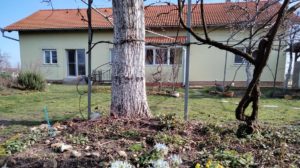
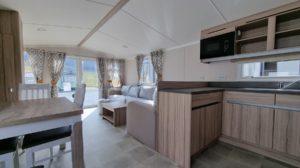
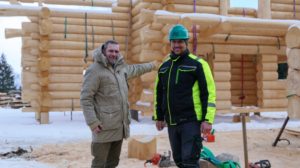
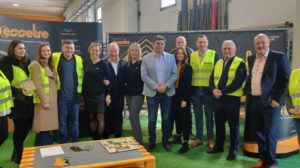
Wood brought from Germany after being cut from Romania!
Right. If I had done this article I would have omitted (wood brought from Germany). Besides, everybody makes tiny houses, and they make them locally, with local wood, with local people: it's like saying "tiny house made of concrete with cement brought from Holland".
Please send me the contact details of this company. I am interested in developing a project with them.
I tried to contact this company, for a project and to find out the costs of such a house, only that the contact number they have on their official website is closed, I gave them mail, I contacted them on facebook, without response. If you know another company that does such projects, can you please help me with a contact! thank you in advance
attention to carelessness, it is understood from the pictures that they would put anti-condensation film inside, well it is not anti-condensation film but it is vapor barrier, at least in the picture of the interior, luckily you can see the company and you can search, not otherwise but if they put anti-condensation film inside instead of vapor barrier they would make their customers sick with mold and fungus, the anti-condensation film is put on the outside, just to stop water from condensation to wet the insulation.
otherwise all the best, good luck to the magazine and the builders.
Hello. I would like a phone number. Thank you.
Hello, I would like a house on wheels
like the one in the picture how much does it cost call 0728308357
[...] with living room, 4 rooms on the ground floor and 2 more in the attic. Wood is also perfect for making a cottage on wheels or a traditional country house. Wood gives builders the possibility to [...]
If possible, a Tel. I am interested in .
Hello,
what is the price, estimated, for a house on wheels with all the necessary equipment, dimensions of 9/2.5m and height of 4 m? a middle price, quality materials, but not the most expensive...
Hi, I would also like an approximate price for a 2.5/6 house. Thank you in advance!
[...] Read more on revistadinlemn.ro [...]
Good evening I am interested in a price for a house on wheels and I would like more information by email
Hello!
I'm interested and would like a phone number if possible. Thank you!
Hello!
Find here contact details.
All the best!
what price such a beauty?
[...] Read more on revistadinlemn.ro [...]
I kindly ask for a phone number or email address for more information... Thank you, Viorica